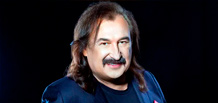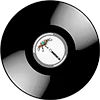Showbiz News
Leak of 86 Million Tracks from Spotify: What’s Happening and What It Means for the Music Industry
 The non-profit project Anna’s Archive has reported the large-scale acquisition of content from the streaming platform Spotify. The dataset reportedly includes 86 million audio tracks and metadata for 256 million musical works. Spotify has acknowledged the fact of unauthorized access and announced the launch of an internal investigation.
The company clarified that a third-party entity was involved in the data collection, using automated tools, bypassing DRM mechanisms, and performing mass metadata extraction. Some of the accounts used in the process have already been blocked, and the platform’s security systems have been further strengthened.
Why Spotify Was Chosen
Anna’s Archive emphasizes that while Spotify does not cover all music ever created, it currently represents t...
The non-profit project Anna’s Archive has reported the large-scale acquisition of content from the streaming platform Spotify. The dataset reportedly includes 86 million audio tracks and metadata for 256 million musical works. Spotify has acknowledged the fact of unauthorized access and announced the launch of an internal investigation.
The company clarified that a third-party entity was involved in the data collection, using automated tools, bypassing DRM mechanisms, and performing mass metadata extraction. Some of the accounts used in the process have already been blocked, and the platform’s security systems have been further strengthened.
Why Spotify Was Chosen
Anna’s Archive emphasizes that while Spotify does not cover all music ever created, it currently represents t...
Court Ends ₴600,000 Dispute Between Moon Records and Kuzma Skryabin’s Family
 The Commercial Court of the city of Kyiv has refused the company MUN RECORDS its claim to recover more than 600,000 hryvnias from LLC “KUZMA SKRYABIN” in a case concerning an alleged infringement of copyright and related rights to the musical works of the band “Skryabin.” In doing so, the court effectively put an end to one of the most high-profile legal disputes surrounding the legacy of Kuzma Skryabin.
What the court decided
According to the ruling in case No. 910/9689/25, the court denied the claimant’s request to recover 605,600 hryvnias in compensation. The dispute concerned an agreement dated January 1, 2017, on the transfer of property rights to the musical works of the band “Skryabin.”
MUN RECORDS claimed that LLC “KUZMA SKRYABIN&rdqu...
The Commercial Court of the city of Kyiv has refused the company MUN RECORDS its claim to recover more than 600,000 hryvnias from LLC “KUZMA SKRYABIN” in a case concerning an alleged infringement of copyright and related rights to the musical works of the band “Skryabin.” In doing so, the court effectively put an end to one of the most high-profile legal disputes surrounding the legacy of Kuzma Skryabin.
What the court decided
According to the ruling in case No. 910/9689/25, the court denied the claimant’s request to recover 605,600 hryvnias in compensation. The dispute concerned an agreement dated January 1, 2017, on the transfer of property rights to the musical works of the band “Skryabin.”
MUN RECORDS claimed that LLC “KUZMA SKRYABIN&rdqu...
More Than Radio: How Minatrix.FM Unites Artists Around the World
 People often say that music knows no borders, but in today’s industry this has turned into an empty cliché. At Minatrix.FM, we see it differently. For us, a “global community” is not dry listening statistics from different countries or soulless analytics charts. It is a living ecosystem made up of real people who share moments of their lives with us—genuine joy, personal stories, and even the first snowfall.
Music as a personal connection: a letter with more life than any promo video
Just recently, our editorial team received a message that doesn’t fit into the usual framework of the music business. Our resident, the talented DJ and musician HestiLL from Iran, sent us not just a new demo track or a technical question. He sent a piece of his soul.
In the...
People often say that music knows no borders, but in today’s industry this has turned into an empty cliché. At Minatrix.FM, we see it differently. For us, a “global community” is not dry listening statistics from different countries or soulless analytics charts. It is a living ecosystem made up of real people who share moments of their lives with us—genuine joy, personal stories, and even the first snowfall.
Music as a personal connection: a letter with more life than any promo video
Just recently, our editorial team received a message that doesn’t fit into the usual framework of the music business. Our resident, the talented DJ and musician HestiLL from Iran, sent us not just a new demo track or a technical question. He sent a piece of his soul.
In the...
What Is Intelligent Drum and Bass? A Complete Genre Guide on Minatrix.FM
 Intelligent (also known as Intelligent Drum & Bass or Intelligent Jungle) is a subgenre of drum & bass that emerged in the mid-1990s as a more melodic, atmospheric, and conceptual alternative to hard jungle and dancefloor-oriented D&B.
The core idea of the genre is a shift away from dancefloor aggression toward musicality, mood, and thoughtful composition. Intelligent is aimed less at clubs and more at focused, attentive listening at home.
Origins of the genre
The 1990s context
In the early 1990s, drum & bass evolved rapidly and aggressively. London’s jungle scene was closely tied to rave culture, fast breakbeats, and heavy sub-bass. However, by 1994–1996, a number of producers began searching for a more mature and musical form.
This gave rise to a direction tha...
Intelligent (also known as Intelligent Drum & Bass or Intelligent Jungle) is a subgenre of drum & bass that emerged in the mid-1990s as a more melodic, atmospheric, and conceptual alternative to hard jungle and dancefloor-oriented D&B.
The core idea of the genre is a shift away from dancefloor aggression toward musicality, mood, and thoughtful composition. Intelligent is aimed less at clubs and more at focused, attentive listening at home.
Origins of the genre
The 1990s context
In the early 1990s, drum & bass evolved rapidly and aggressively. London’s jungle scene was closely tied to rave culture, fast breakbeats, and heavy sub-bass. However, by 1994–1996, a number of producers began searching for a more mature and musical form.
This gave rise to a direction tha...
Psy Chill: Music of Expanded Space — History, Artists, and Psychedelic Vibe
 Psy Chill (or Psychedelic Chillout) is a subgenre of electronic music that emerged as a calm, atmospheric counterpart to psytrance. It blends elements of ambient, downtempo, dub, ethnic music, and psychedelic electronics, while preserving the depth and spatial awareness characteristic of the trance scene.
Unlike dancefloor-oriented psytrance, Psy Chill is not designed for peak energy, but for relaxation, recovery, and immersion. It is often used as background music at festivals, in lounge and chillout areas, as well as for home listening and meditation.
Origins and development of the genre
Psy Chill began to take shape in the late 1990s and early 2000s within psychedelic trance culture. Large psytrance festivals created a need for dedicated relaxation spaces — so-called chillout zone...
Psy Chill (or Psychedelic Chillout) is a subgenre of electronic music that emerged as a calm, atmospheric counterpart to psytrance. It blends elements of ambient, downtempo, dub, ethnic music, and psychedelic electronics, while preserving the depth and spatial awareness characteristic of the trance scene.
Unlike dancefloor-oriented psytrance, Psy Chill is not designed for peak energy, but for relaxation, recovery, and immersion. It is often used as background music at festivals, in lounge and chillout areas, as well as for home listening and meditation.
Origins and development of the genre
Psy Chill began to take shape in the late 1990s and early 2000s within psychedelic trance culture. Large psytrance festivals created a need for dedicated relaxation spaces — so-called chillout zone...
Florida Breaks — the history and sound of 1990s Orlando Breaks
 Florida Breaks (also known as Orlando Breaks or Orlando Sound) is a subgenre of breakbeat that emerged in Central Florida (USA) in the late 1980s and developed most actively during the 1990s. The genre became an important part of American club culture and had a noticeable influence on the development of the U.S. breaks scene.
Florida Breaks is characterized by an energetic, dancefloor-oriented feel, a powerful bass presence, and a clear focus on club play, in contrast to the more experimental or “dark” British breakbeat sound.
Origins and historical context
The Florida club scene
Florida Breaks emerged within the nightlife and rave environments of Orlando, Miami, and Tampa. At that time, Florida was one of the key centers of American dance culture, where the following styles we...
Florida Breaks (also known as Orlando Breaks or Orlando Sound) is a subgenre of breakbeat that emerged in Central Florida (USA) in the late 1980s and developed most actively during the 1990s. The genre became an important part of American club culture and had a noticeable influence on the development of the U.S. breaks scene.
Florida Breaks is characterized by an energetic, dancefloor-oriented feel, a powerful bass presence, and a clear focus on club play, in contrast to the more experimental or “dark” British breakbeat sound.
Origins and historical context
The Florida club scene
Florida Breaks emerged within the nightlife and rave environments of Orlando, Miami, and Tampa. At that time, Florida was one of the key centers of American dance culture, where the following styles we...
New Age — a contemplative genre of modern instrumental music
 New Age is a music genre that emerged in the second half of the 20th century and is focused on calm, atmospheric, and meditative soundscapes. Its primary purpose is to create a relaxing audio environment that supports rest, concentration, and inner balance.
Unlike dance or pop genres, New Age is not designed for active listening. It is music for background use, reflection, and contemplation, where overall mood and timbral depth matter more than hit structure or catchy hooks.
The origins of the genre
The New Age genre began to take shape in the 1970s, during a period of growing interest in alternative culture, minimalism, and sound experimentation. It developed alongside ambient music and overlaps with it in many ways, but generally adopts a more melodic and accessible form.
The genre was i...
New Age is a music genre that emerged in the second half of the 20th century and is focused on calm, atmospheric, and meditative soundscapes. Its primary purpose is to create a relaxing audio environment that supports rest, concentration, and inner balance.
Unlike dance or pop genres, New Age is not designed for active listening. It is music for background use, reflection, and contemplation, where overall mood and timbral depth matter more than hit structure or catchy hooks.
The origins of the genre
The New Age genre began to take shape in the 1970s, during a period of growing interest in alternative culture, minimalism, and sound experimentation. It developed alongside ambient music and overlaps with it in many ways, but generally adopts a more melodic and accessible form.
The genre was i...
Chillstep — a melodic and atmospheric subgenre of dubstep
 Chillstep is a subgenre of electronic music that emerged at the intersection of dubstep, ambient, and downtempo. Its defining characteristic is the combination of dubstep’s signature rhythm and bass structure with a soft, calm, and melodic sound.
Unlike aggressive forms of dubstep, chillstep is not designed for the dancefloor but rather for contemplative and emotional listening. The genre gained widespread popularity in online environments and is commonly used as background music for relaxation, work, and concentration.
Origins and Formation of the Genre
Chillstep began to take shape in the late 2000s and early 2010s, alongside the rapid rise of the dubstep scene. During this period, many producers started experimenting with softer and more melodic variations of the sound, moving awa...
Chillstep is a subgenre of electronic music that emerged at the intersection of dubstep, ambient, and downtempo. Its defining characteristic is the combination of dubstep’s signature rhythm and bass structure with a soft, calm, and melodic sound.
Unlike aggressive forms of dubstep, chillstep is not designed for the dancefloor but rather for contemplative and emotional listening. The genre gained widespread popularity in online environments and is commonly used as background music for relaxation, work, and concentration.
Origins and Formation of the Genre
Chillstep began to take shape in the late 2000s and early 2010s, alongside the rapid rise of the dubstep scene. During this period, many producers started experimenting with softer and more melodic variations of the sound, moving awa...
Minatrix.FM celebrates its Birthday! 15 years on air — together with you!
 December 12 is a special date for everyone who loves electronic music, club culture, and live online radio. It was on this day, back in 2010, that Minatrix.FM aired its first broadcast. No one could have imagined that a small enthusiast project would grow into the largest club portal and one of the most stable music platforms — one that survived every storm, every crisis, and even the disappearance of its competitors.
Today, Minatrix.FM continues to grow, evolve, and open its doors to new artists. And this celebration is, above all, for you — our listeners.
A bit of history we are proud of
2010 — the first broadcast. At the time, we streamed only one music channel and gathered our first listeners manually.
2012–2015 — the golden era of parties and club projec...
December 12 is a special date for everyone who loves electronic music, club culture, and live online radio. It was on this day, back in 2010, that Minatrix.FM aired its first broadcast. No one could have imagined that a small enthusiast project would grow into the largest club portal and one of the most stable music platforms — one that survived every storm, every crisis, and even the disappearance of its competitors.
Today, Minatrix.FM continues to grow, evolve, and open its doors to new artists. And this celebration is, above all, for you — our listeners.
A bit of history we are proud of
2010 — the first broadcast. At the time, we streamed only one music channel and gathered our first listeners manually.
2012–2015 — the golden era of parties and club projec...
Stepan Hyga Has Fallen Into a Coma: The People’s Artist Is in Critical Condition
 The condition of the People’s Artist of Ukraine Stepan Hyha remains critical. According to the latest reports, the artist has fallen into a coma following severe complications, making his current situation extremely serious. Doctors continue to fight for his life, while the family and his team ask the public to respect the artist’s privacy.
Emergency surgery and cancellation of concerts
It should be recalled that on November 19, Stepan Hyha underwent an emergency surgery in Lviv. Due to a sudden deterioration in his health, all scheduled performances were cancelled, including a major concert at the Kyiv Sports Palace.
The artist’s team announced at the time that his condition was serious but stable, and that he remained under constant medical supervision.
What is known no...
The condition of the People’s Artist of Ukraine Stepan Hyha remains critical. According to the latest reports, the artist has fallen into a coma following severe complications, making his current situation extremely serious. Doctors continue to fight for his life, while the family and his team ask the public to respect the artist’s privacy.
Emergency surgery and cancellation of concerts
It should be recalled that on November 19, Stepan Hyha underwent an emergency surgery in Lviv. Due to a sudden deterioration in his health, all scheduled performances were cancelled, including a major concert at the Kyiv Sports Palace.
The artist’s team announced at the time that his condition was serious but stable, and that he remained under constant medical supervision.
What is known no...
Goa Trance: the history, philosophy, and revival of the iconic psychedelic trance (TB-303)
 Goa Trance is one of the most iconic and mystical subgenres of electronic music, born on the sunny beaches of Goa and transformed into an entire philosophy of freedom, trance and spiritual journey. Today, nearly 30 years after its golden era, Goa Trance is experiencing a powerful revival: new artists are experimenting with the sound, and global festivals are bringing the style back to the main stages.
What is Goa Trance?
Goa Trance is a psychedelic subgenre of trance built around:
multi-layered acid synthesizers (TB-303 and its emulations),
ethnic and spiritual motifs,
pulsating 135–150 BPM rhythms,
hypnotic fractal melodies,
a psychedelic atmosphere and deep-trance aesthetics.
This is music that creates a journey inward, merging dance, ritual and visual psychedelia.
History: from...
Goa Trance is one of the most iconic and mystical subgenres of electronic music, born on the sunny beaches of Goa and transformed into an entire philosophy of freedom, trance and spiritual journey. Today, nearly 30 years after its golden era, Goa Trance is experiencing a powerful revival: new artists are experimenting with the sound, and global festivals are bringing the style back to the main stages.
What is Goa Trance?
Goa Trance is a psychedelic subgenre of trance built around:
multi-layered acid synthesizers (TB-303 and its emulations),
ethnic and spiritual motifs,
pulsating 135–150 BPM rhythms,
hypnotic fractal melodies,
a psychedelic atmosphere and deep-trance aesthetics.
This is music that creates a journey inward, merging dance, ritual and visual psychedelia.
History: from...
Dub Techno — depth, fog and echo. How the genre is experiencing a new revival in 2024–2025
 Dub Techno is one of the most atmospheric and meditative subgenres of techno. It is the music of fog, space, and endless echo, where every sound seems to dissolve into deep reverberation.
In recent years, the style has regained massive popularity on streaming platforms and in the club scene. Producers are returning to the analog sound of the ’90s, and listeners — to hypnotic rhythms where time seems to stop.
What is Dub Techno?
Dub Techno is techno infused with:
reverberation,
echo,
spatial delays,
soft analog textures,
deep sub-bass,
meditative minimalism,
the atmosphere of infinite space.
This is music where rhythm is the structure, and space is the main instrument.
History: From Berlin to the world
The genre was born in the early 1990s in Berlin thanks to the duo Basic Cha...
Dub Techno is one of the most atmospheric and meditative subgenres of techno. It is the music of fog, space, and endless echo, where every sound seems to dissolve into deep reverberation.
In recent years, the style has regained massive popularity on streaming platforms and in the club scene. Producers are returning to the analog sound of the ’90s, and listeners — to hypnotic rhythms where time seems to stop.
What is Dub Techno?
Dub Techno is techno infused with:
reverberation,
echo,
spatial delays,
soft analog textures,
deep sub-bass,
meditative minimalism,
the atmosphere of infinite space.
This is music where rhythm is the structure, and space is the main instrument.
History: From Berlin to the world
The genre was born in the early 1990s in Berlin thanks to the duo Basic Cha...
Synthwave — the music of neon nights and digital nostalgia. The revival of the genre in 2025
 Synthwave is one of the most iconic genres of modern electronic music, inspired by the aesthetics of the 1980s: neon lights, VHS culture, retro-futurism, analog synths, and the spirit of cyberpunk. But Synthwave is no longer just a retro sound. In 2024–2025, the genre is experiencing a new resurgence, gaining fresh sonic ideas and an updated visual wave of popularity.
What is Synthwave?
Synthwave is a style of electronic music influenced by:
80s movie soundtracks,
sci-fi atmospheres and neon megacities,
arcade video games,
analog synthesizers (Juno, Prophet, Moog),
classic cyberpunk aesthetics.
The genre is characterized by:
rich analog synths
melodic leads
retro basslines
TR-707/808 drum machines
warm nostalgia
cinematic sound design
Synthwave creates a world where the past and ...
Synthwave is one of the most iconic genres of modern electronic music, inspired by the aesthetics of the 1980s: neon lights, VHS culture, retro-futurism, analog synths, and the spirit of cyberpunk. But Synthwave is no longer just a retro sound. In 2024–2025, the genre is experiencing a new resurgence, gaining fresh sonic ideas and an updated visual wave of popularity.
What is Synthwave?
Synthwave is a style of electronic music influenced by:
80s movie soundtracks,
sci-fi atmospheres and neon megacities,
arcade video games,
analog synthesizers (Juno, Prophet, Moog),
classic cyberpunk aesthetics.
The genre is characterized by:
rich analog synths
melodic leads
retro basslines
TR-707/808 drum machines
warm nostalgia
cinematic sound design
Synthwave creates a world where the past and ...
Glam Rock - the glittering revolution of music.
 Glam Rock is a style that turned music into more than sound — it became a true spectacle. It’s a genre where glitter, theatrics, eccentricity, and powerful guitar riffs merge into one big show.
And in 2025, interest in Glam Rock is skyrocketing again. From fashion and film to pop music and TikTok — the glam-rock aesthetic is returning brighter than ever.
What Is Glam Rock?
Glam Rock is a musical and visual movement of the early 1970s, characterized by:
sparkling costumes, platform boots, and flamboyant makeup,
theatrical performance style,
simple yet powerful guitar riffs,
a blend of rock, pop, and glitter aesthetics,
eccentric characters who built entire worlds on stage.
It’s music where the artist can be a superhero, an alien, an underground dandy, or ...
Glam Rock is a style that turned music into more than sound — it became a true spectacle. It’s a genre where glitter, theatrics, eccentricity, and powerful guitar riffs merge into one big show.
And in 2025, interest in Glam Rock is skyrocketing again. From fashion and film to pop music and TikTok — the glam-rock aesthetic is returning brighter than ever.
What Is Glam Rock?
Glam Rock is a musical and visual movement of the early 1970s, characterized by:
sparkling costumes, platform boots, and flamboyant makeup,
theatrical performance style,
simple yet powerful guitar riffs,
a blend of rock, pop, and glitter aesthetics,
eccentric characters who built entire worlds on stage.
It’s music where the artist can be a superhero, an alien, an underground dandy, or ...
K-Pop — the vibrant world of Korean pop music. A complete guide to the genre on Minatrix.FM
 K-Pop (Korean Pop) is one of the most influential modern music movements, combining pop sound, dance aesthetics, visual artistry, and a powerful idol industry. It is more than just music — it is a cultural phenomenon that has taken over the world, shaping a new era of global pop culture.
On Minatrix.FM, you can listen online and download the best K-Pop tracks in MP3 320 kbps — from legendary groups to fresh debuts, from soft ballads to powerful dance hits. Our catalog is updated regularly and includes both global chart-toppers and promising artists of the new waves.
What is K-Pop?
K-Pop is the South Korean music industry that brings together multiple genres:
pop
EDM
hip-hop
R&B
trap
future bass
retro sounds (disco, funk, synthwave)
The key feature of K-Pop is full multi-g...
K-Pop (Korean Pop) is one of the most influential modern music movements, combining pop sound, dance aesthetics, visual artistry, and a powerful idol industry. It is more than just music — it is a cultural phenomenon that has taken over the world, shaping a new era of global pop culture.
On Minatrix.FM, you can listen online and download the best K-Pop tracks in MP3 320 kbps — from legendary groups to fresh debuts, from soft ballads to powerful dance hits. Our catalog is updated regularly and includes both global chart-toppers and promising artists of the new waves.
What is K-Pop?
K-Pop is the South Korean music industry that brings together multiple genres:
pop
EDM
hip-hop
R&B
trap
future bass
retro sounds (disco, funk, synthwave)
The key feature of K-Pop is full multi-g...
Welcome to the Minatrix FM News page — the place where the latest music trends and radio updates are always alive! We’ve gathered for you the freshest news about your favorite artists, exclusive interviews, show announcements, and much more.
What will you find on the Minatrix FM News page?
- Music Releases: Stay updated with the hottest new tracks from famous artists and rising stars.
- Show Announcements: Get informed in advance about upcoming shows, interviews, and special editions.
- Artist Interviews: Read exciting conversations with your favorite performers, their inspirations, and new projects.
- Radio Station Updates: Keep track of schedule changes, new projects, and Minatrix FM initiatives.
- Top Charts: Discover the most popular tracks playing on-air right now.
- Party & Festival Schedule: Follow the dates and locations of major music events organized by Minatrix FM or featuring your favorite artists.
We do everything to be your guide in the world of modern music and radio. Minatrix FM is not just a radio station, but also a source of inspiration for all music lovers.
Subscribe to updates to be the first to know about news and events!
Join Minatrix FM — together we make the world of music brighter!
Visit Minatrix FM News right now and find out what’s happening in the music industry.

